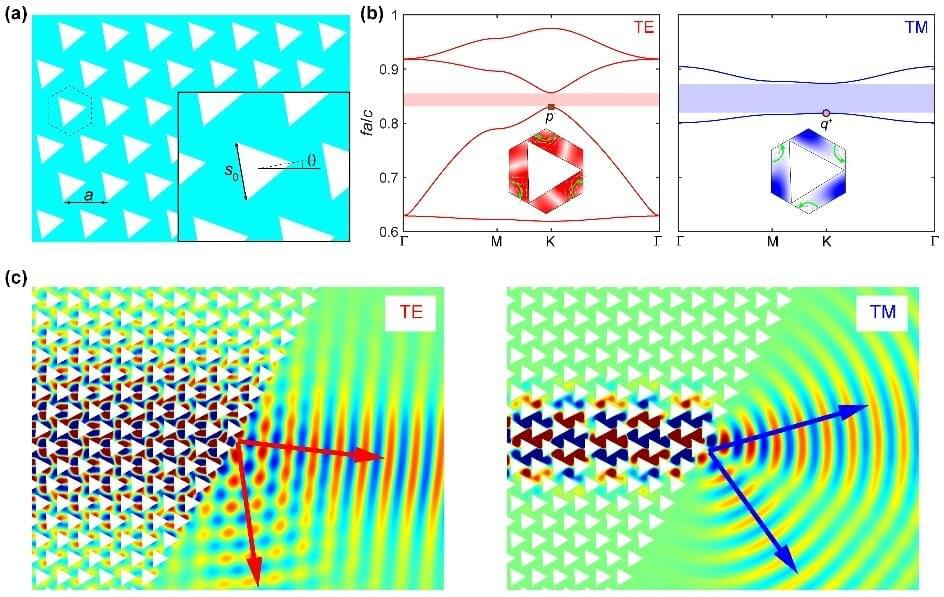The introduction of topology in photonic systems has attracted considerable attention not only for the elaborate molding of light but also for its practical applications in novel photonic devices. Originally, the quantum Hall effect of light was realized in photonic crystals (PCs) by introducing external electric or magnetic fields to break the time-reversal symmetry (TRS).
Instead of breaking the TRS, the quantum spin-Hall effect of light has been achieved in TRS-preserved systems where photonic pseudospins can be constructed. Recently, the valley Hall effect of light has been realized by introducing the binary valley degree of freedom (DoF) into photonic systems. One of the vital features of the valley Hall effect is the nontrivial photonic band gap, which is characterized by the nonzero valley Chern number.
Furthermore, valley-dependent edge modes are supported at the domain wall which consists of two PCs with opposite-valley Chern numbers. The valley Hall effect of light is commonly realized in a triangular-lattice PC with broken mirror symmetry or in a honeycomb-lattice PC with broken spatial inversion symmetry, and it is compatible with existing nanophotonic fabrication technique.










Comments are closed.